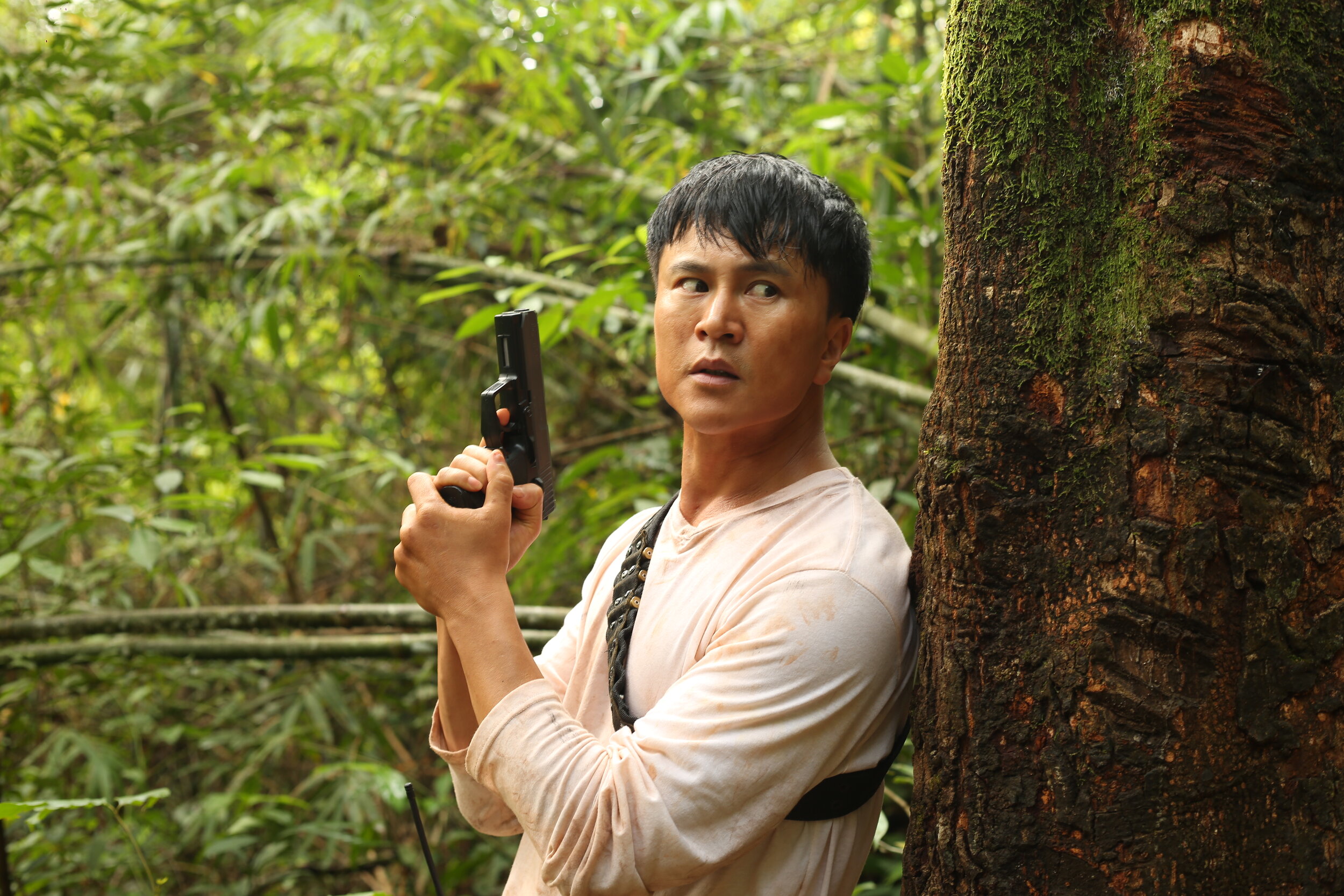The Prey: Human hunting season has been extended for no good reason in Cambodia
By Thom Ernst
Rating: C+
It’s not that director Jimmy Henderson’s newly released action-thriller The Prey isn’t entertaining, or that there isn’t a suitable amount of violence to keep genre fans amused. Prey is a satisfying enough diversion to earn a qualified passing grade.
But what holds Henderson’s film back from achieving full-on B-movie splendor is a muddled third act crammed with too many villains vying for the position of top dog. And the central hero, who has driven the narrative up to this point, seems all but forgotten.
Gu Shangwei plays a police officer on the run from human-hunters in The Prey.
The Prey is one more in a myriad of films (very) loosely based on Richard Connell’s short story The Most Dangerous Game. Connell works on the premise that, should a wealthy big-game trophy hunter tire of killing traditional wildlife, he would turn the cross-hairs toward more wily game, like humans.
The high-concept plot doesn’t need much tinkering, and yet tinkering happens. The result is a story that’s been revised and retold to varying degrees of creativity, from teenage dystopia (The Hunger Games, 2012), to the 1994 survivalist-horror Surviving the Game.
In Henderson’s version, Xin (Gu Shangwei), a Chinese police officer who is deep undercover, is mistaken for a criminal and tossed into a Cambodian prison. The prison is run by a corrupt warden (Vithaya Pansringarm) who farms out convicts as unwilling participants in his annual hunting tournament. Now Xin is fighting for his life against a brutal group of wealthy trophy-hunters determined to win the tournament’s substantial prize money.
You don’t have to put much effort into the reading of Connell’s story to recognize the corrupting factors that wealth and privilege have in affording one group to assume a right to oppress another. It’s a theme that remains intact, whether told by wit, satire, or horror, regardless of what variants are added or removed in the retelling. And history has done its part to corroborate the viable nature of Connell’s story.
There have already been three variations on the human-hunting-human theme within the past 12 months: The Furies (2019), Ready or Not (2019), and, most recently, The Hunt (2020). All three of those films feature strong female leads in both hero and villain roles. That’s not the case with The Prey, which revels in fetishizing masculine hostility.
The lone female character, Detective Ly (Dy Sonita) despite being a trained police officer, is relegated to a role that amounts to little more than hero-bait, with a few maternal duties tossed in. Ly does have an occasion to flex some muscle, but it’s a moment so penciled into the script that it barely registers more than a “so-what” response.
Henderson’s adaptation can be sub-categorized as the martial-arts edition of Connell’s story. However, feet and elbows frequently make way for more preferred weapons such as hunting knives and machine guns. But Henderson’s film veers far enough off track that Connell doesn’t warrant so much as ‘based on a story by’ in the end credits. It is only in the film’s second act, sandwiched between a first-act prison drama and a third act Rambo-esque war movie, that Henderson pays much heed to his source.
Henderson divides, then subdivides, the narrative between the hunted and the hunters until it becomes challenging to know whose story matters most. At first, the twists that crop up in the narrative —the hallucinations of someone who has PTSD and a tragic case of mistaken identity—seem to be promising attempts at pumping new blood into an old theme. Unfortunately, these developments serve only to confuse an unnecessarily complicated scenario.
The Prey. Directed by Jimmy Henderson. Starring Gu Shangwei, Dy Sonita and Vithaya Pansringarm. North American (U.S. and Canada) VOD release on August 25 on all major platforms.


